Published in the October 2017 issue of “Die Porsche Kassette”
Ⓒ2017 Technolab / PedrosGarage.com

For more information on flooded Porsches and more, please visit my website:
www PedrosGarage.com.
Happy Porsche'ing,

By the time you read this article, rebuilding efforts will be well underway in the recently affected areas of Southeast Texas and Louisiana.
Hurricane Harvey with its unrelenting rain and cat-4 winds caused catastrophic damage that will take years to recover from. Our heart goes out to all those affected.
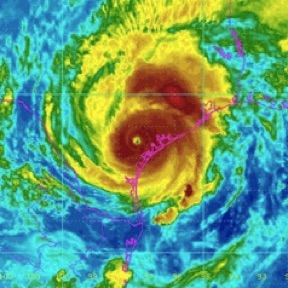
The flooding in the Houston area was indescribable and there are reports that 500,000 to 800,000 cars were flooded by this particular storm. To put it in perspective, “only” 250,000 cars flooded during Hurricane Sandy in 2012 and that was considered very big at the time.
Looking at recent US vehicle statistics Porsche has a 0.3% market share in car sales in the country. If we are conservative and whittle down that number by half, to only 0.15%, that means that 750 to 1,200 Porsches were flooded by Harvey.
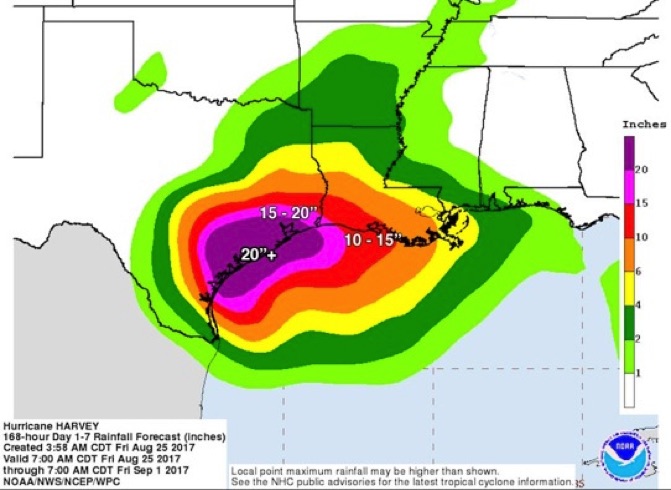
But, what does this mean to you and me?
There are several things to consider:
• Used car prices will spike drastically once Houston dries out.
People will need to replace their damaged cars as soon as possible and most will go to the used car marketplace to do so. As soon as the insurance settlements start coming in, you will see the market react upwards.
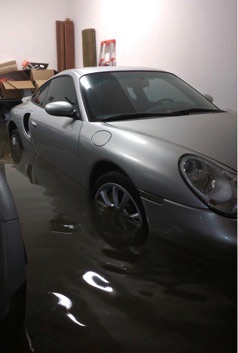
• There will be many flooded cars that make it to the used car market.
Some unscrupulous dealers and individuals will ship a number of those damaged cars out of Texas, will do quick repairs and will try to register them in another State with a clean title.
Reselling flooded cars is not illegal, as long as the damage to the car is disclosed on the vehicle’s title.
The issue with a flooded car is that although the carpet, seats, etc. can be dried and treated for mold, there will be inherent damage done to the electrical circuits and harnesses, including connectors and printed circuit boards that may take months or even years to surface. And that’s just with fresh water flooding, because if it was brackish or salt water the problems listed above are much harsh and also add the issue of metal corrosion, particularly in hidden areas, such as body panel seams and the multiple nooks and crannies within the vehicle.
If you are in the market for a used Porsche, here are some of the steps that you, or better yet, your PrePurchase Inspector should take:
• Try to get the history of the vehicle. Carfax.com and/or AutoCheck.com provide those reports for a nominal cost. Pay special attention to the vehicle’s title history.
• Give the interior of the car the “sniff test”. Can you detect a whiff of mildew?
• Check under the carpets for mud or rust spots. Don’t forget the trunk(s).
• Mud and debris collect in hard to clean places, such as the hood and trunk lids.
• Rust on the heads of exposed screws in the engine bay, around the doors or in the trunk(s) indicate exposure to excess moisture.
• Mud and debris on the underpanels is another good sign that the car has been under water.
• Porsche places the Central Locking Unit (CLU) in many of its vehicles under the driver’s seat. This unit controls the immobilizer, alarm, windows and convertible top and is expensive to replace. It is highly recommended that it be carefully inspected for signs of water damage in its circuit board and connectors.
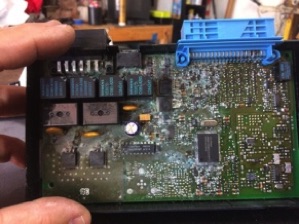
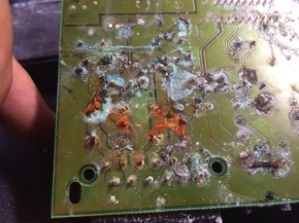
If you encounter what you believe is a flooded car, my best advise is to walk away. I don’t say that lightly. Even if the price is too good to be true, it’s best to walk away. I have seen way too many customers try to keep a flooded car, all with horrible long-term results and very high maintenance costs, along with unreliability due to the lingering effects of the water incursion.

